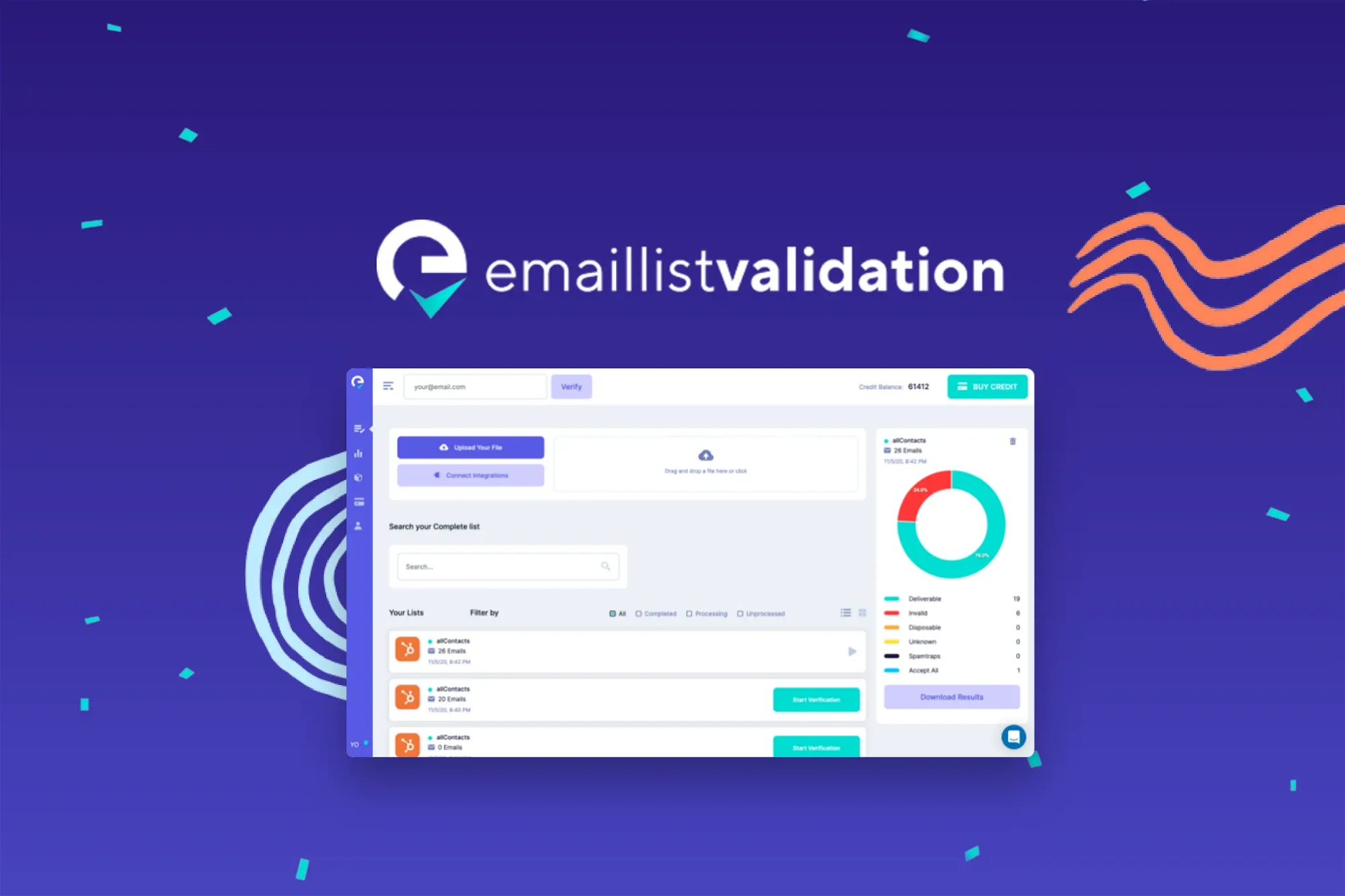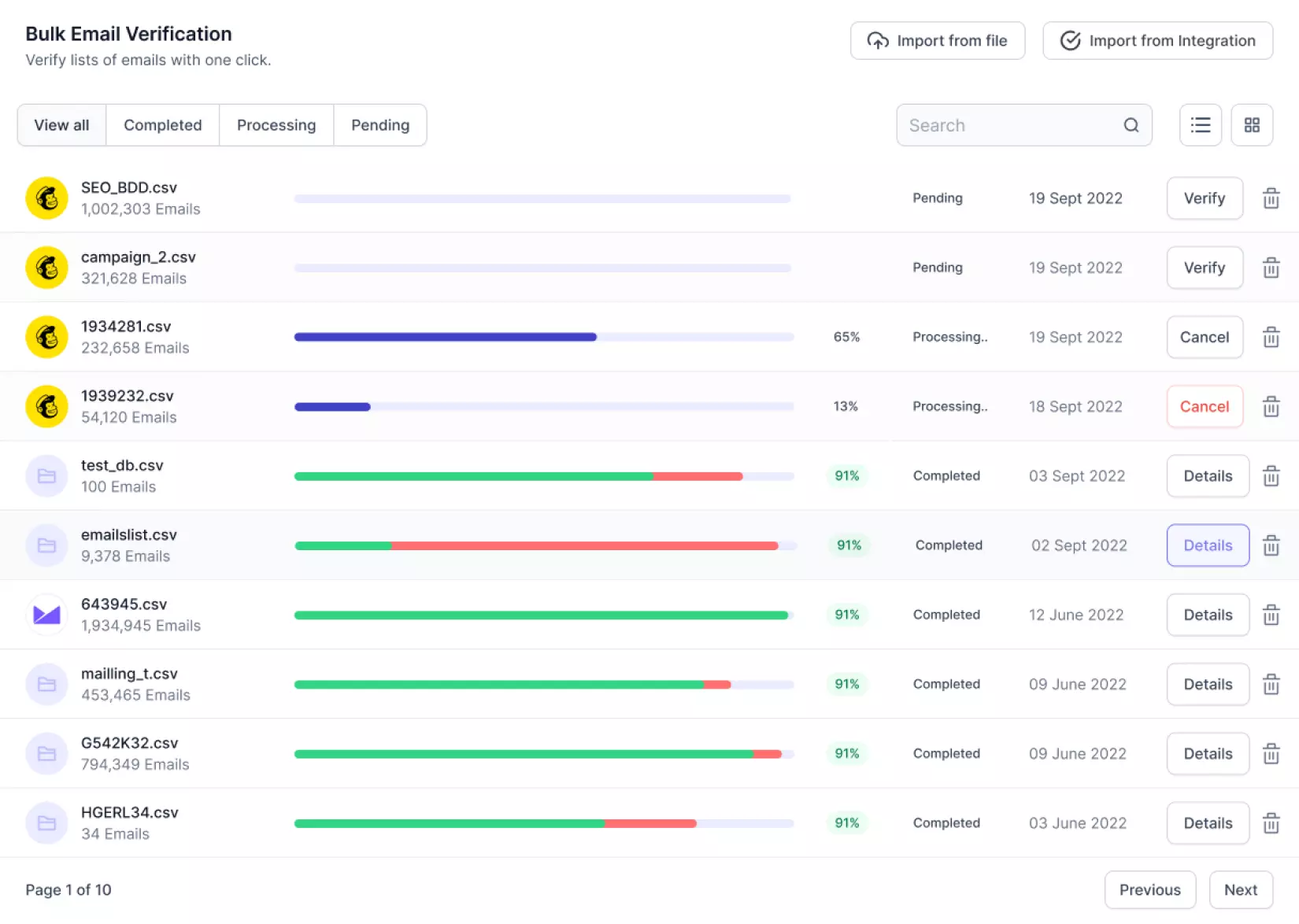Email verification codes, those little digital keys sent to your email, are gatekeepers to enhance the security of your online presence. They're a defense line confirming that you—and only you—can access an account or perform an action. This guide will walk you through understanding email verification codes, pinpointing their whereabouts, and deploying them to fortify your digital security.
What Are Email Verification Codes?
Email verification codes are strings of characters dispatched to your email to confirm your identity. They act as a one-time password to validate actions such as account creation, password resets, and vital changes to account settings.
Finding Your Verification Codes
These codes typically land straight in your email inbox. However, if they're playing hide and seek, check your spam or junk folder, or sift through the promotions or social tabs if you're a Gmail user.
Tip: If you're looking to streamline your email marketing efforts, using Email List Validation from Appsumo can help ensure that only valid emails are included in your campaigns. This can reduce the chances of missing important verification codes and improve your email delivery rates.
Using Your Verification Codes Effectively
Once you've spotted the verification code, copy and paste it into the required field on the relevant platform. Be precise—these codes are often sensitive to the case and expire after a short window, so timing is crucial.
Pro Tip: If you're managing a business and need reliable, secure tools to enhance your online security, consider using NordVPN to protect your data while handling sensitive information like verification codes.
Troubleshooting Missing Verification Codes
No code in sight? Take a breath, then double-check your email address for typos, request a new code, or wait it out—sometimes, digital traffic jams cause delays.

Advantages of Email List Validation
Here's where the magic of Email List Validation comes into the picture, transforming your email marketing endeavors with its arsenal of tools and benefits.
- Impeccable Accuracy: With real-time validation, Email List Validation promises that dreaded bounces will be a thing of the past.
- Speedy Processing: Thanks to optimized algorithms and speed-focused servers, expect a 98% delivery rate at triple the pace.
- Comprehensive Verification Features:
- Email Deduplication: Banish duplicates from your lists.
- Spam-Trap Removal: Sidestep those sneaky spam-trap pitfalls.
- Risk Validator: Scan for red flags within email components.
- MTA and Domain Validation: Ensure the email structure and domain are up to the mark.
- Complainers Verify: Keep naysayers at bay by removing complainer addresses.
- Syntax Verifier: Instantly discard emails with format faux pas.

Benefits That Go Beyond Verification:
- Reduced Bounce Rate: Keep your emails flying straight to the target inbox.
- Lowered Costs: Trim the fat from your campaigns and save some coin.
- Boosted Inbox Delivery: Sharpen your sender reputation and watch open rates climb.
- Clean Lists, Better Conversions: With a pristine list, watch as engagement and conversions soar.
Understanding Result Codes:
Understanding the feedback from email servers is crucial, and Email List Validation provides a comprehensive suite of result codes to interpret the server responses accurately:
- "ok or valid": Green light – the email server is primed to accept messages to this address.
- "error": A red flag – delivery failed, but the email's existence or status remains unclear.
- "smtp_error": A faulty or confused SMTP server response.
- "smtp_protocol": The SMTP server initiated a connection but terminated it prematurely.
- "unknown_email": A definite no – the email address does not exist.
- "attempt_rejected": The server rebuffed the delivery attempt.
- "relay_error": A relay issue caused delivery failure.
- "antispam_system": Anti-spam measures are obstructing the verification process.
- "email_disabled": The email account is inactive or restricted.
- "domain_error": Issues with the domain's email server or DNS.
- "dead_server": No response from the email server – it's unresponsive.
- "syntax_error": The email address doesn't comply with formatting standards.
- "unknown": Sometimes, patience is key – a server that's temporarily unavailable may respond if retried after a short interval.
Other Intriguing Codes:
- "Accept all or Ok for all": A domain setup that's all-inclusive, making email validity hard to pin down.
- "Disposable": Ephemeral email addresses created for temporary use.
- "Spam Traps": Email addresses set as traps to capture and flag spam activity.
- "Invalid vendor response": A non-responsive domain server, often a hiccup when dealing with Yahoo domains.
Make the Most of Your Email List
Every email on your list is a potential customer, a conversation, a conversion. Email List Validation sifts the wheat from the chaff, ensuring your message reaches fertile ground. Check out Email List Validation's features in action, and give your marketing campaigns the edge they deserve.
Don't let a single undelivered email chip away at your campaign's potential. Head over to Email List Validation, where you can run your list through our rigorous validation process. See for yourself how a clean list can revolutionize your email marketing. Check your list now and ensure every email is an opportunity, not a dead end.
Streamline Your Business with Shopify
If you're building an online store or managing an e-commerce platform, you'll want a reliable, user-friendly solution. Shopify is an excellent platform to create your store, manage sales, and integrate with a variety of marketing tools. Whether you're new to online business or scaling an existing store, Shopify offers features that can support your growth.
Discover More Tools on AppSumo
If you're looking for tools to optimize your business operations, check out AppSumo. It’s a great platform to discover a variety of software solutions designed to help businesses grow, whether you’re focused on marketing, customer management, or other business needs.



